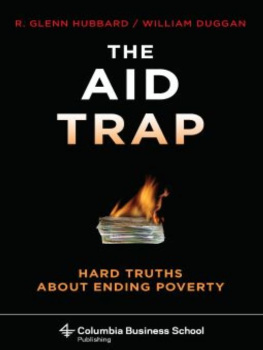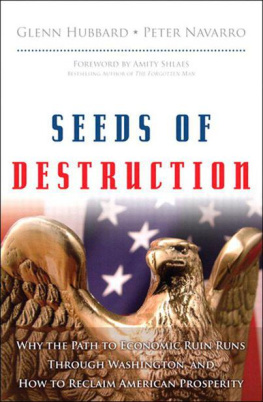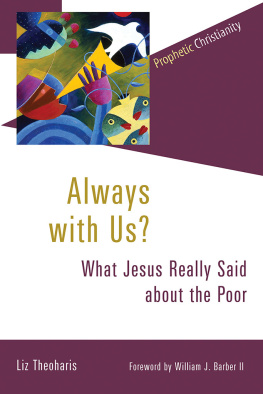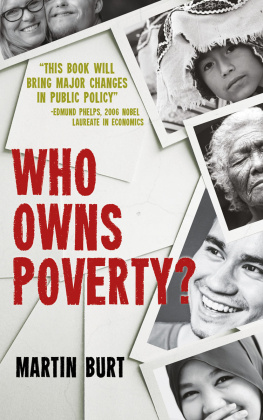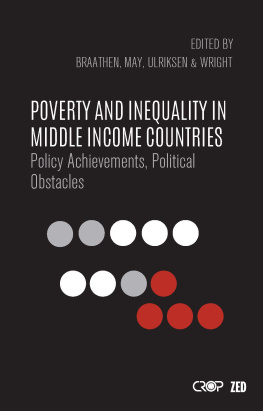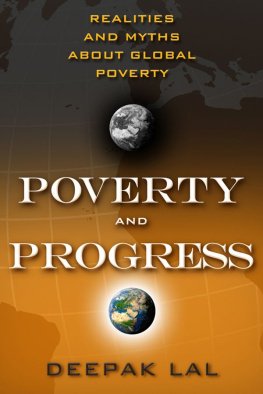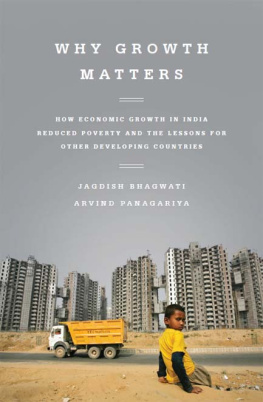PREFACE
THE SOFTWARE OF PROSPERITY
For the third time in a little more than a century, Wall Street is in crisis. The effects have spread throughout the world. The previous crises of 1907 and 1929-32 ended when the American business sector recovered. Around the world today the response so far has been the same: to shore up each countrys local business sector. We see a global consensus among prosperous nations that a thriving business sector is the source of their prosperity. They know that their local businesses are the only hope to have enough good-paying jobs for the majority of their people on into the future. These nations are taking massive government action, not to replace the business sector but to revive it.
Not so for many poor countries. Their own governments are mostly anti-business, and the aid that rich countries give them overwhelmingly supports government agencies and nongovernmental organizations (NGOs) rather than business. For some reason, rich countries support business in their own countries but not in poor ones. This book explains the reason and offers an alternative to the current aid system: a large-scale program of pro-business aid for the poor nations of the world.
The leading advocates of the current aid system are celebrities like the rock star Bono, the Columbia economist Jeffrey Sachs, and Bill Gates through his foundation. They argue that rich countries have both the technology that poor countries need to prosper and the wealth to provide it to them. On the other side we have Africa Unchained by George Ayittey, White Mans Burden by William Easterly, and Dead Aid by Dambisa Moyo: They document not only that aid has not made poor countries any more prosperous, but also that the aid system continues to do the same things again and again despite the evidence that they dont work.
Certainly Ayitteh, Easterly, and Moyo are right, that the past forty years of development aid have been a spectacular failure. But that failure was not inevitable, and it does not need to continue. We can go back two decades earlier than that to find one aid program from rich to poor that did work: the Marshall Plan of 1948 to 1951. Postwar America was rich, Europe was poor, and the Marshall Plan helped Europe catch up. Advocates of even more aid through the current system sometimes call for a Marshall Plan today for poor countries. Are they right?
Yes they are, but for reasons that might surprise them. Most of the recent calls for a Marshall Plan for poor countries today mistake what the original Marshall Plan actually did. That mistaken view is that the Marshall Plan gave away food, medicine, and clothing, on one hand, and rebuilt government infrastructure such as ports, railroads, and water systems, on the other. In fact, the Marshall Plan was in the first instance a program not of charity aid or of government infrastructure but of support to local business. It made loans to European companies, who repaid them to their governments, who then spent the funds on ports, railroads, and water supplies. To qualify for the Plan, countries had to enact certain pro-business policies to make sure that their local businesses could use the loans well.
Lets take a page from Bill Gatess own success in the world of business and divide aid into two parts: hardware and software. The hardware is the ports, railroads, and water plants of the Marshall Plan, or the medicines, fertilizers, and boreholes of the current aid system. The software is the loans and funding mechanism of the Marshall Plan, or the government and NGO project mechanism of current aid. The Marshall Plan software works, and the current aid software doesnt. Gates is right that technology is the key to aid, but not the hardware of medicines, fertilizers, and boreholes. Like the source of his own fortune, its the software that matters most.
This book is about the software of prosperity: the rules, policies, and institutions that govern how business operates in each country and the mechanisms of aid funding that either help or hurt that local business sector. The current world financial crisis is clearly a software problem. Thats what everyones trying to fix for the prosperous countries of the world. World poverty is also a software problem, but the aid system has been trying to fix the hardware instead, and got the software wrong. The Marshall Plan got it right for postwar Europe. For the sake of poor countries, lets hope its not too late to correct the error and get it right for them too.

The authors would like to thank Myles Thompson of Columbia University Press for urging us to write this book, for his precious editorial guidance, and for the chance to contribute to the new imprint of Columbia Business School Publishing. Marina Petrova of the Press worked wonders with the manuscript. And we thank the many students and alumni of Columbia Business School who are ahead of us in both word and deed to help foster a thriving business sector in the poorer countries of the world.
INTRODUCTION
THE CHARITY TRAP
If you stroll along Wall Street in New York, you see that it ends at Trinity Church. Its a famous view, down the narrow street to the elegant spire of the brownstone church. You can find the view in countless postcards, guides to New York City, and snapshots that tourists took themselves. For two centuries Trinity has been the Wall Street church, and remains so to this day.
If you went to Trinity on Easter Sunday, 2008, you heard the childrens choir and a stirring sermon by the rector. In the Prayers of the People you prayed for the Episcopal Church, the Archbishop of Canterbury, bishops in the United States, and Trinitys companion Diocese of Matlosane, South Africa. You prayed for the American president, the governor of New York State, the mayor of New York City, and the secretary-general of the United Nations. You prayed for the homeless and destitute, for all who have died, and for the Parish mission that proclaims by word and example the Good News of God in Christ.
And you also prayed for this:
We pray to strengthen our commitment to the Millennium Development Goals, and in support of Counting Prayers, a show of will we say, The world now has the means to end extreme poverty. We pray that we have the will.
Counting Prayers is a Trinity program that encourages religious congregations of all denominations to support the United Nations Millennium Development Goals and sponsor Millennium Villages in the poorest countries of the world. One of its aims is a billion prayers for the Goals, and it keeps track online. As of June 11, 2008, the tally was 563,218. When you become a Millennium Congregation, you send money to a Millennium Village, stay in touch with the villagers online, and send your congregation members to visit them. The money goes to help the Village put in place all eight Goals at once:
1. Eradicate extreme poverty and hunger.
2. Achieve universal primary education.
3. Promote gender equality and empower women.
4. Reduce child mortality.
5. Improve maternal health.
6. Combat HIV/AIDS, malaria, and other diseases.
7. Ensure environmental sustainability.
8. Develop a global partnership for development.
Trinity is just one of the many notable supporters of these Millennium Development Goals. Celebrities like the rock star Bono and the Hollywood actress Angelina Jolie are perhaps the most famous examples. The list is long and grows every day. Yet Trinitys support is especially telling on two key counts. First, it shows the roots of the Goals in the timeless and worthy religious desire to help the needy. Second, it takes place literally in the shadow of Wall Street, worldwide home of the real solution to poverty: the business sector.

